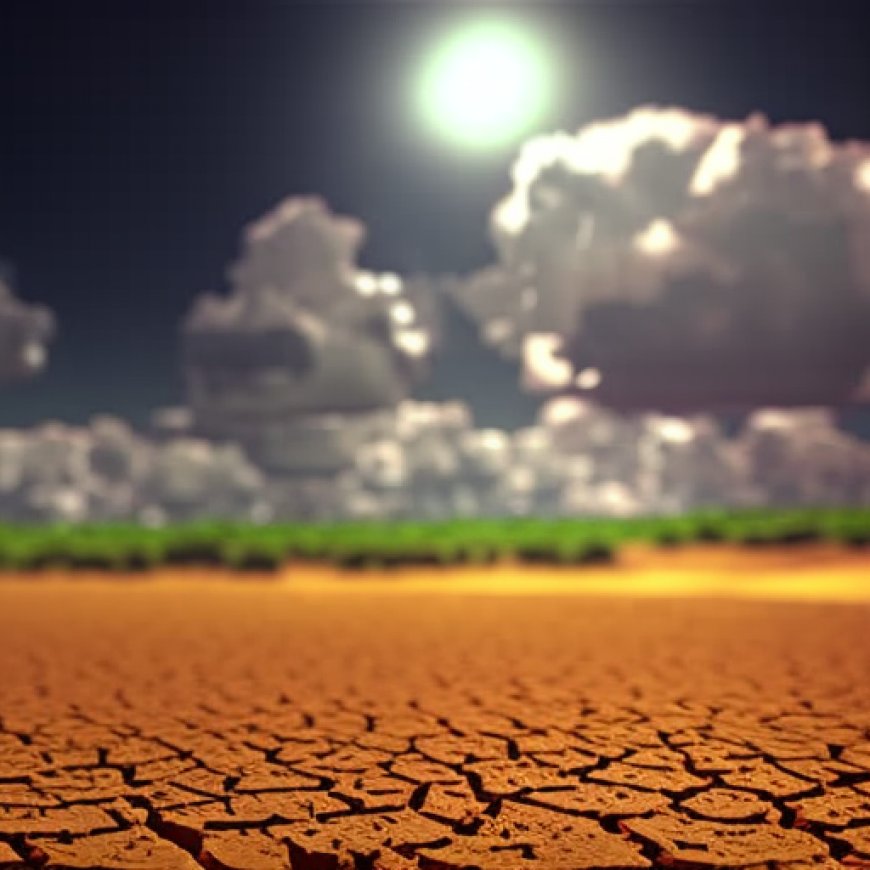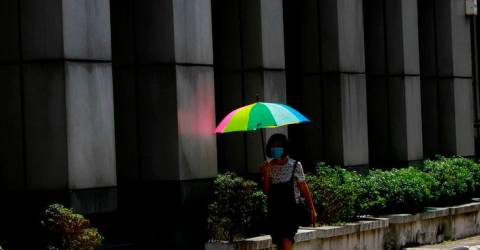Weather agency warns of hot weather as Indonesia enters dry season
Weather agency warns of hot weather as Indonesia enters dry season theSun


JAKARTA: Dry Season Expected in Majority of Indonesia’s Regions

Introduction
About 63.66% of Indonesia’s regions will experience the dry season from May to August this year, according to the country’s Meteorology, Climatology and Geophysics Agency (BMKG).
Early Dry Season and Hot Temperatures
“As May begins, some areas will shift into the early dry season while others stay in transition. This means early May will probably bring hot temperatures and clear skies during the daytime,” stated BMKG meteorology deputy, Guswanto, in a statement.
Sustainable Development Goal (SDG) emphasized: Climate Action
No Link to Recent Heatwaves in Asia
He said the recent heatwaves in parts of Asia aren’t linked to Indonesia’s hot temperatures, explaining that the country’s heat is cyclical due to the sun’s movement and clear daytime weather.
Sustainable Development Goal (SDG) emphasized: Climate Action
Heatwaves and Meteorological Conditions
A heatwave, defined by the World Meteorological Organisation, is a period of hot weather lasting five days or more, with daily maximum temperatures surpassing the average by 5°C or more.
These typically happen in mid-to-high latitude areas, such as Europe, America and parts of Asia.
“Meteorologically, this occurs when hot air gets trapped near the surface because of unusual atmospheric dynamics, causing limited airflow, especially in prolonged broad-scale high-pressure systems.
“Such weather conditions are unlikely in Indonesia, which is located near the equator,” Guswanto added.
Sustainable Development Goal (SDG) emphasized: Climate Action
Recorded Temperatures in Indonesia
Based on BMKG data, temperatures exceeding 36°C have been recorded in various regions of Indonesia, including Deli Serdang (North Sumatra) at 37.1°C, Medan (North Sumatra) at 36.6°C, and Kapuas Hulu (West Kalimantan) at 36.6°C.
Sustainable Development Goal (SDG) emphasized: Climate Action
Possibility of Rainfall
Despite some areas experiencing hot weather, Guswanto pointed out that there is still a possibility of moderate to heavy rain in parts of Indonesia.
Sustainable Development Goal (SDG) emphasized: Climate Action
Heavy Rainfall in April 2024
In late April 2024, there was heavy rainfall in several regions where Kerinci (Jambi) received 83.8 millimetres per day (mm/day), Manado (North Sulawesi) had 80 mm/day, Aceh Besar (Aceh) saw 130 mm/day, Minangkabau (West Sumatra) had 84 mm/day, and Indragiri (Riau) experienced 92 mm/day.
Sustainable Development Goal (SDG) emphasized: Climate Action
SDGs, Targets, and Indicators
| SDGs | Targets | Indicators |
|---|---|---|
SDG 13: Climate Action |
|
|
SDG 6: Clean Water and Sanitation |
|
|
Analysis
1. Which SDGs are addressed or connected to the issues highlighted in the article?
The issues highlighted in the article are connected to SDG 13: Climate Action and SDG 6: Clean Water and Sanitation.
2. What specific targets under those SDGs can be identified based on the article’s content?
Based on the article’s content, the following targets can be identified:
– Under SDG 13: Climate Action:
– Target 13.1: Strengthen resilience and adaptive capacity to climate-related hazards and natural disasters
– Target 13.2: Integrate climate change measures into national policies, strategies, and planning
– Target 13.3: Improve education, awareness-raising, and human and institutional capacity on climate change mitigation, adaptation, impact reduction, and early warning
– Under SDG 6: Clean Water and Sanitation:
– Target 6.4: Increase water-use efficiency across all sectors and ensure sustainable withdrawals and supply of freshwater to address water scarcity
– Target 6.5: Implement integrated water resources management at all levels, including through transboundary cooperation as appropriate
– Target 6.6: Protect and restore water-related ecosystems, including mountains, forests, wetlands, rivers, aquifers, and lakes
3. Are there any indicators mentioned or implied in the article that can be used to measure progress towards the identified targets?
Yes, there are indicators mentioned or implied in the article that can be used to measure progress towards the identified targets. These indicators include:
– Percentage of regions in Indonesia experiencing the dry season from May to August (related to SDG 13 targets)
– Recorded temperatures exceeding 36°C in various regions of Indonesia (related to SDG 13 targets)
– Occurrences of heavy rainfall in specific regions of Indonesia (related to SDG 13 and SDG 6 targets)
These indicators can be used to assess the resilience and adaptive capacity to climate-related hazards, integration of climate change measures into policies, strategies, and planning, improvement in education and awareness on climate change, water-use efficiency, implementation of integrated water resources management, and protection and restoration of water-related ecosystems.
SDGs, Targets, and Indicators
| SDGs | Targets | Indicators |
|---|---|---|
SDG 13: Climate Action |
|
|
SDG 6: Clean Water and Sanitation |
|
|
Copyright: Dive into this article, curated with care by SDG Investors Inc. Our advanced AI technology searches through vast amounts of data to spotlight how we are all moving forward with the Sustainable Development Goals. While we own the rights to this content, we invite you to share it to help spread knowledge and spark action on the SDGs.
Fuente: thesun.my

Join us, as fellow seekers of change, on a transformative journey at https://sdgtalks.ai/welcome, where you can become a member and actively contribute to shaping a brighter future.







